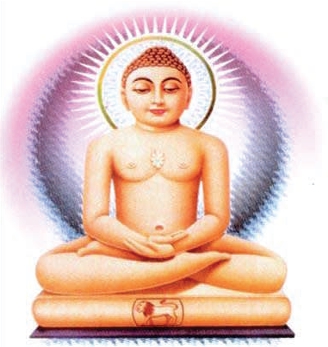
Ancient History of Jainism can be traced back to the time of Bhagwan Rishabh Dev. It was under the reign of Chandragupta Maurya that Jainism gained recognition.
History of Jainism dates back to the time of Bhagwan Rishabh Dev or Adinath. He was the first of the 24 Tirthankaras and belonged to the House of Ikshwaku, also known as the "House of the Sun". According to the Jain philosophy, Bhagwan Rishabh Dev was the first Tirthankar of the present age (Avasarpini). It is for this reason that he is known as Adinath, the first Bhagwan. He became a Siddha, an enlightened soul which has demolished all of its karma. The development of Jainism in ancient India is integrally related to the life and deeds of Adinath.
Ancient History of Jainism also includes the time period of Lord Mahavira, the twenty-fourth Tirthankar who formed the Jain Sangh. He was born in 599 BC. at Kshatriyakund to Emperor Siddhha and his mother`s Queen Trishala. They were very religious people and were devotees of Bhagwan Parshva. Queen Trishala had fourteen dreams when she conceived Lord Mahavira.
At the age of thirty Lord Mahavira gave up his corporeal life and activities. He spent most of his time in austerity and in meditation for almost twelve and a half years. At the age of forty-two he achieved Nirvana, Kewal-Gyan.
Formation of Jain Sangh
As the last Tirthankar, Lord Mahavira formed a religious order (Tirth) that comprised of monks, nuns, Shravaks and Shravikas. This order is known as the Jain Sangh. His first follower, called Ganadhar, was Gautamswami who was a famous Brahmin scholar of the time. Bhagwan Mahavir had eleven Ganadhars who compiled twelve Holy Scriptures based on the teachings of Bhagwan Mahavira.
For a century or so after the passing away of Bhagwan Mahavir, Jainism remained an insignificant denomination with no great following worth speaking. With Buddhism becoming much popular and attracting huge number of followers, Jainism could not come to the fore front but had a small but highly committed following of its own.
Jainism during Maurya Rule
During this period, the Sangh survived because of the dedicated work of many spiritual leaders referred in the Jain texts as Gandharas. It was because of their efforts that the Sangh gained much recognition in the fourth century BC by the time the Mauryas came to power. According to history the first Emperor, the celebrated and legendary Chandragupta Maurya, became a Jain in the later part of his reign and died as a Jain monk. Bhadrabahu, a Jain monk of highest virtue, was instrumental in this conversion.
Bhadrabahu persuaded Chandragupta Maurya to accompany him to the south during an impending famine in northern India. There they spread Jainism among the common masses. The Emperor then travelled to a place now called Shravanabelgola in the south. Chandragupta Maurya ended his life there, in the true Jain custom, fasting himself to death. At the same time, when Bhadrabahu was in the south with his devotees, a group of monks remained in the north, facing the famine, under the leadership of Sthulabhadra. Later Bhadrabahu proceeded to Nepal, where he died.
During the post Mauryan period Jainism spread to south India for the dedicated work of the Jain monks who migrated to the south. Many south Indian kings got converted to Jainism and patronized the religion. Gradually Jainism also spread to the eastern coastal belt of India now constituting, parts of Andhra Pradesh and Orissa. About 450 BC, an assembly under the leadership of Devarddhi was organized at Vallabhi. Here eighty-four works as the main canonical literature got recognized.
In the west, in Gujarat, Jainism became famous mainly during the medieval period under the rule of Kumarapala. However, the invasion of the Muslims from outside affected Jainism especially in Gujarat and Rajasthan but it still survived because of the dedication and high degree of ascetic control of its monks.